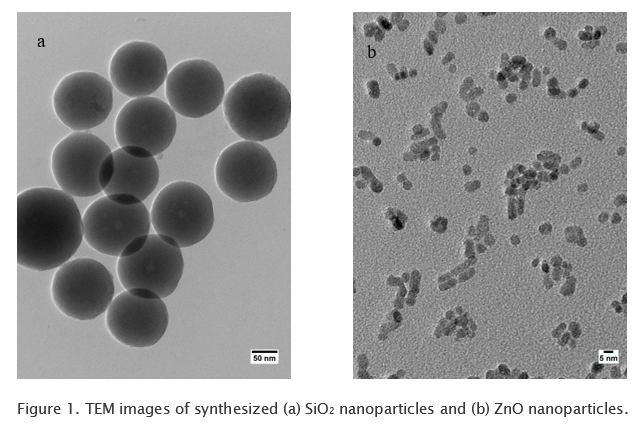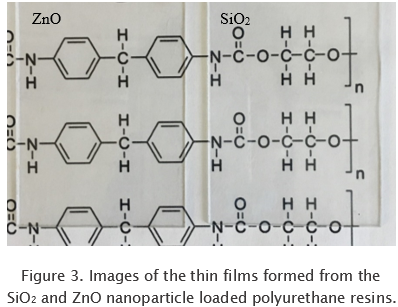Theresa Hendrick, Technical Research Analyst at Cerion Advanced Materials, explains how Cerion is incorporating nanoparticles for high-performance coatings.
Coatings provide two primary functions – decoration and protection – and they are becoming increasingly advanced. Consumers and manufacturers are driving demand for advanced coatings that provide protection from a variety of elements, including corrosion, scratches, fingerprints, bacteria, light and moisture. This demand has led to efforts to create high-performing coatings that are integral to virtually any product on the market today.
Incorporating nanomaterials into coatings results in superior characteristics that typically cannot be achieved in traditional coatings. Nanoparticles have at least one dimension less than 100 nm, and their large surface area allows for enhanced reactivity, transparency and exceptional properties even when incorporated at low concentrations. Industry is creating more sophisticated nanocoatings to better address fundamental problems that impact many industries, such as antimicrobial protection, corrosion resistance, easy-to-clean, flame retardancy, scratch and abrasion resistance, strength and UV protection. There is also great interest in creating multifunctional nanocoatings that have more than one performance attribute or benefit.
Polyurethane (PU) coatings, which are are an organic polymer-based coating made up of repeating urethane units, were first developed and commercialized in the early-mid 1900s to provide a higher level of versatility at a time when protective coatings were much more limited and not multifunctional. Today, PU coatings are applied to a variety of substrates (as metals, plastics, concrete). PU coatings can be formulated as solvent-borne, water-borne, high solids or powder polyurethane coatings. They provide effective chemical resistance, corrosion protection, scratch and abrasion resistance, UV resistance and weathering resistance, and they find application in a range of industries, including automotive, construction, electronics, furniture, marine, textile and transportation.
When inorganic nanoparticles are incorporated into coatings, there is a beneficial synergistic effect. Inorganic–organic hybrid materials possess the properties of both components. The properties of hybrid materials can be controlled and tailored by adjusting the type of organic material, the type and size of inorganic nanoparticle, and ratios. By adding nanotechnology to coatings, PU coating manufacturers are adding value and revolutionizing the coating industry.
Small particles that make a huge impact
A range of nanoparticles offer positive and exciting properties when incorporated into coatings. Some results are promising enough to lead certain nanocoatings to be commercialized, such as those containing silicon dioxide, silver, titanium dioxide, zinc oxide or zirconium dioxide. They impart a broad variety of performance enhancements to substrates including self-cleaning, antimicrobial, UV protecting, scratch resistance, corrosion resistance and conductive properties.
Silicon dioxide (SiO2) nanomaterials enhance coatings with a range of beneficial properties, including scratch, abrasion and corrosion resistance, self- and easy-cleaning, antireflective and anti-fog. For easy to clean and anti-fogging, hydrophilic SiO2 nanoparticles impart functional characteristics to the substrate that make it high-performing yet transparent so it does not impact the appearance of the substrate. In creating optical coatings for scratch and wear resistance, SiO2 nanoparticles result in coatings that are anti-reflective due to their low refractive index. SiO2 nanoparticles added to polymers have been commercialized to create hydrophilic and dirt repelling nanocoatings, as well as PU nanocoatings with increased weathering resistance and improved thermal and mechanical properties.
Nanoscale silver (Ag) has unique conductive and antimicrobial properties and is incorporated into coatings for hospitals, food processing plants and textiles. Silver ions, as nanoparticles and salts, are effective against a range of bacteria, including strains that are antibiotic resistant. Coatings that contain nano-Ag kill bacteria associated with body odour and prevent the spread of infections. In the biomedical space, Ag is used for coating polymers used in catheters. It is also used in antifouling coatings for ships, and in coatings for wood preservation. In electronics, Ag nanowires have superb electrical conductivity for transparent conductive coatings and flexible electronics. Nanosilver coatings are commercialized for use in public spaces, on household surfaces, and textiles for antimicrobial protection, as well as for touchscreen applications.
Titanium dioxide (TiO2) nanoparticles are known for their photocatalytic properties, and can be used in coatings for self-cleaning, air-cleaning, antibacterial protection and UV absorption. When exposed to UV light TiO2 is activated and reacts with water to form reactive oxygen species which decompose organic matter. Nano TiO2 can be found in paints to remove volatile organic compounds from ambient air, for self-cleaning and for UV absorption. TiO2 nanocoatings have also proven to be an effective and long-lasting antibacterial agent. Its low toxicity and cost have contributed to TiO2 polymer nanocoatings being commercialized for a range of substrates.
Zinc oxide (ZnO) nanoparticles are used in UV protecting, corrosion resistant and antibacterial coatings. As coating manufacturers steer away from organic UV absorbers, they’re turning to ZnO for its superb absorption of UVA and UVB rays. The design of ZnO nanomaterials for UV-resistance, however, calls for careful and precise design. Larger particles are more effective at UV protection, but they need to be small enough to be transparent. There is also interest in nano-ZnO for its antibacterial properties against Gram-positive and Gram-negative bacteria. This lends itself to use in healthcare where there is an industry-wide need for more effective antibacterial coatings to help prevent the spread of infections.
Zirconium dioxide (ZrO2) nanoparticles are showing promise in the optical coatings market. It is a well-known high refractive index (RI) nanoparticle which can increase the RI of optical coating formulations applied to displays and other optical surfaces. They are incorporated into polymers to produce high RI coatings that outperform traditional polymers used for optical coatings that have low RIs and are not ideal for certain optical applications.
The art of nanomaterial engineering
A hurdle to incorporating advanced materials into coatings is poor dispersibility. Despite high availability of nanopowders, the presence of aggregates and the lack of tailorability makes their incorporation into coatings, processability, and successful performance challenging. The solution lies in finding polymer-nanoparticle dispersions that can be utilized in the current coating processes, for a new generation of coating materials.






